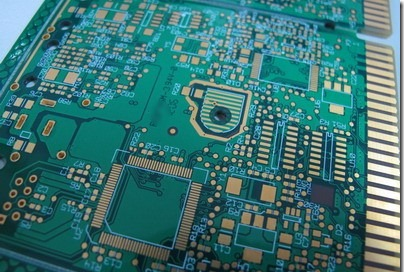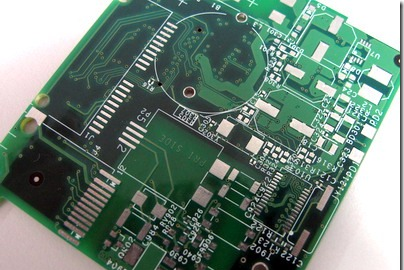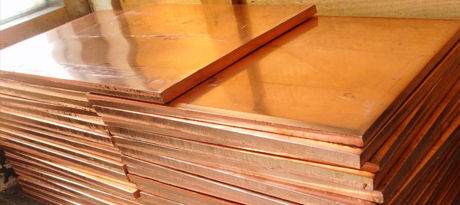 address:201, Factory 6, Longhui Industrial Park, Fuqiao 3rd District, Xinhe Community, Fuhai Street, Baoan District, Shenzhen china
address:201, Factory 6, Longhui Industrial Park, Fuqiao 3rd District, Xinhe Community, Fuhai Street, Baoan District, Shenzhen china
The purpose of circuit board surface treatment? Sort out the pros and cons of several common PCB Finishes
This is a Finished article about the PCB surface. The main purpose of PCB Surface Finished is to protect the bottom copper layer from oxidation, not only to achieve good welding results and electrical conductivity characteristics, but also to continue to protect the solder joints after welding from oxidation.
With the evolution of The Times, the progress of science and technology, the requirements of environmental protection, the electronic industry is also with the giant wheel of The Times forward or forced to advance, the circuit board technology is not the same. Several of the surface treatment of these circuit boards, the general process of the industry at present, the bear is currently in its surface treatment is not perfect, so it can only be said that there are such a choice, each with advantages and disadvantages. The following are illustrated by Work Bear.
Naked copper:
"Bare copper plate", as the name implies, means that the copper foil surface of the circuit board is not protected by any surface treatment, and the outermost circuit is completely exposed. Once unsealed, it directly contacts with the air.
Advantages of bare copper plate:
Low cost, smooth surface, good solderability (note: before oxidation).
Disadvantages of bare copper plate:
Because there is no protection, easy to be affected by acid and humidity, can not be kept for a long time, must be used up within 2 hours after unpacking, because copper is easily oxidized when exposed to the air; Cannot be used for double-sided process. Because the two surfaces oxidized during the first reflow welding.
If there are test points, paste must be printed to prevent oxidation, otherwise the contact with the probe will not be good.
HASL (Hot Air bowing):
HASL, Hot Air Solder Levelling
HASL tin spray plate is to spray tin on the surface of copper foil to protect the copper foil, and use hot air to form a wind knife to flatten the tin surface. General tin spraying device has two kinds of vertical and horizontal, each has advantages and disadvantages.
Advantages of tin plate:

Wet-wetting effects for the tin coating itself are also cheaper for ENIG, but more expensive than OSP. There is no welding performance, only this usually, 1 surface arc welding (1st reflow), the second arc welding surface must have this advantage.
The disadvantage of spraying tin plate is
Weld leg very fine cracks, a went ahead, a small spray tin plate parts surface roughness decreased, therefore especially 2 surface arc welding arc home, another welding, surface could be molten tin, arc welding liner of flatness is poor, of course to overcome than the solder paste thickness, feet between fine forget the solder paste is not too thick.
In PCBA method, ball bearings are easy to be produced, and short circuit is easy to be produced in the parts of thin interlegs.
Two sides SMT mode using 2 face loss of the case, after a high temperature welding, so re melting tin jade and tin droplets like the influence of gravity dripping tin points, welding is prone to occur.
In addition, in the second welding, it is possible to eat tin layer and affect solderability due to tin oxidation and IMC thickness during the first welding, especially tin thick thin plate is prone to occur.
Read more:
Causes of tin defect in HASL (Data collection)
ENIG (Electroless Nickel Immersion Gold):
ENIG is a chemical coating of copper foil with "nickel" followed by "gold". In ENIG circuit board, the role of "gold" is only to protect the nickel layer from air oxidation, thus affecting the quality of the solder.
The advantages of the ENIG board are
It is not easy to oxidize and can be stored for a long time. It is suitable for welding parts with flat surface, thin clearance and small solder spot. Preferred circuit board with keys (e.g. mobile phone board). Reflow welding can be repeated, solder is not too poor. Can be used as the base material for Chip On Board (COB) wiring. ENIG is not easily oxidized because the gold on the surface protects the nickel underneath, so the thickness of the gold layer is important. Too thin a gold layer will not protect nickel, and too thick will hinder the formation of nickel-tin alloys.
Disadvantages of ENIG board:

IMC is a tin-nickel alloy, so the cost is high and the welding strength is poor. In addition, there is no use of electroplated nickel, prone to black liner/graphite problems. The nickel layer oxidizes over time, and long-term reliability becomes an issue.
Read more:
The relationship between part drop and substrate plating thickness
What about the ENIG surface treatment circuit? Advantages and disadvantage
[Film] Circuit board line outline
ENIG surface treatment of two potential problems of PCB board (black nickel and phosphorus layer) and preventive measures
Osp Alloy Preservative
Osp uses a chemical method to coat the copper surface with a long layer of copper agent. This layer of organic copper protective agent can quickly expose the clean copper surface of the flux and weld with the solder paste at high temperature. The thicker the organic copper protective agent is, the higher the protection of copper foil, but the flux with relatively strong activity is needed. OSP is a copper protective agent that chemically and organically covers the surface of copper. This layer of organic copper protective agent can quickly expose the clean copper surface of the flux and weld with the solder paste at high temperature. The thicker the organic copper protective agent is, the higher the protection of copper foil, but the flux with relatively strong activity is needed.
Advantages of OSP board
The price is cheap. Of the various PCB surfaces, OSP is the cheapest, with the exception of bare copper.
Naked copper plate welding of all the advantages, with a fresh plate of good weldability, shelf life of 3 months (or 6 months) of the plate, again the surface treatment, usually 1 times, than to see if the surface line is very fine line welding or mat is reprocessed, in order to eat a little copper surface, if too fine line can not be processed again.
OSP is copper based, fresh OSP solder has good strength and can withstand large impact stresses. Solder formed on a fresh copper base is stronger than a nickel base but degrades with time. (Extended reading: Comparison of welding strength data of OSP and ENIG Surface Treated Circuit boards)
Disadvantages of OSP board:
It protects the copper surface from acid and humidity. When used for reflow welding, it must be completed within a certain period of time, and reflow welding is usually poor. If stored for more than three or six months, the surface treatment must be redone. It is generally required to be used up within 24 hours after opening.
Since the OSP is an insulating layer, the Test Point must print solder paste to remove the original OSP layer.
OSP boards shall not undergo bonding contact surface treatment. Because the copper protection sheet is not resistant to key friction, it will oxidize after a period of use, resulting in poor key contact.
In addition, OSP plate, copper base solder after 5 good initial 6 combined with the generation of CU IMC group, after the passing of time, gradually generated cu 3 character compatibility of the poor IMC group, reliability problems and long-term use, if the need for high temperature environment and the need for product service life OSP long-term reliability should be considered.
Read more:
What is an OSP surface treated circuit board? Advantages and disadvantages?
Immersion Silver (Immersion Silver, IM - AG), silver plate, silver plate
First, the work bear's personalized silver plate experience is not actually used. Therefore, the following information about the silver plate was heard from my third and sixth aunt and integrated with their own ideas. Forget it. Let me know if there's an expert.
The surface treatment process of silver plate is actually very simple. With the Jabanni effect, the copper foil (Cu) on the PCB surface can be replaced directly with silver (Ag).
2Ag + + Cu→ 2Ag + Cu 2
Under normal conditions, copper loses electrons and is oxidized (Cu -- > 2E -- + Cu 2+) due to its high potential. At low potential, silver gains electrons and is reduced (2Ag + + 2e -- > 2Ag).
Advantages of silver plate:
Because the surface silver is accumulated by replacement, the surface flatness of silver is better, and the price of silver should be cheaper than that of gold.
"Silver" in the welding can improve the wettability of welding, a certain proportion of "silver" can also enhance the welding strength, improve the fatigue resistance, through the cold and hot impact test. However, if the "silver" content is too high (more than 4% by weight), the solder will become brittle, requiring attention.
"Silver" also has the situation that tin reacts to form AG3Sn IMC under high heat, but this "silver" layer is very thin, which protects copper from ENIG's "Gold (Au)" and oxidation in the welding process, so it is believed that the actual IMC after welding is also tin copper alloy.
Disadvantages of silver plate:
According to work Bear, silver was only popular when RoHS were introduced and has not been used much since.
Because, if the content of silver in the solder reaches a certain degree, it is easy to produce wick in the solder process. Electromigration also occurs during use, resulting in dendrite, resulting in quality problems that are detrimental to finely spaced products.
In addition, the silver and IMC layers are prone to produce small bubbles below, affecting the reliability of products, especially BGA components.
The appearance and welding quality of the silver plate are easily affected by vulcanization in atmosphere due to environmental pollution. Generally, the proposal is used 48 hours after opening.
-
No comment












 tel:+86-18825224069
tel:+86-18825224069 email:
email:





















